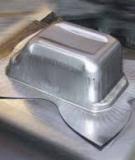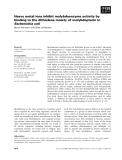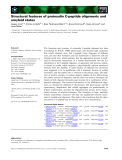
Metal forming process
-
Metal forming to make large parts, take large reductions, use high strength materials, work to net shape (precision flashless closed die forging), and use cold forming to obtain certain physical properties all require high forming forces. These forces may be larger than the capacity of existing machinery.
 33p
33p  vcuong222
vcuong222
 13-05-2015
13-05-2015
 60
60
 5
5
 Download
Download
-
Molybdenum insertion into the dithiolene group on the 6-alkyl side-chain of molybdopterin is a highly specific process that is catalysed by the MoeA and MogA proteins in Escherichia coli. Ligation of molybdate to molybdopterin generates the molybdenum cofactor, which can be inserted directly into molybdoenzymes binding the molybdopterin form of the molybdenum cofactor,
 12p
12p  vinaphone15
vinaphone15
 28-02-2013
28-02-2013
 35
35
 1
1
 Download
Download
-
The formation and structure of proinsulin C-peptide oligomers has been investigated by PAGE, NMR spectroscopy and dynamic light scattering. The results obtained show that C-peptide forms oligomers of different sizes, and that their formation and size distribution is altered by salt and divalent metal ions, which indicates that the aggregation process is medi-ated by electrostatic interactions.
 10p
10p  viettel02
viettel02
 19-02-2013
19-02-2013
 42
42
 3
3
 Download
Download
-
The addition of clay in the form of bauxite refining residue (red mud) prior to composting has been suggested as a way to control heavy metal mobility in compost. Leachability and plant availability of metals in a mixture of grass clippings and sawdust spiked with metal solution was markedly reduced during the composting process.
 7p
7p  tudoia
tudoia
 06-04-2011
06-04-2011
 107
107
 9
9
 Download
Download
-
Carbonylation is one of the most important reactions leading to C-C bond formation. Direct synthesis of carbonyl compounds with CO gives rise to carboxylic acids and their derivatives, such as esters, amides, lactones, lactams etc. The process can be represented by the simple reactions of Scheme 5.1. In general, carbonylation proceeds via activation of a C-H or a C-X bond in the olefins and halides or alcohols, respectively, followed by COinsertion into the metal-carbon bond.
 17p
17p  boyminsk
boyminsk
 10-06-2010
10-06-2010
 127
127
 14
14
 Download
Download
CHỦ ĐỀ BẠN MUỐN TÌM

















